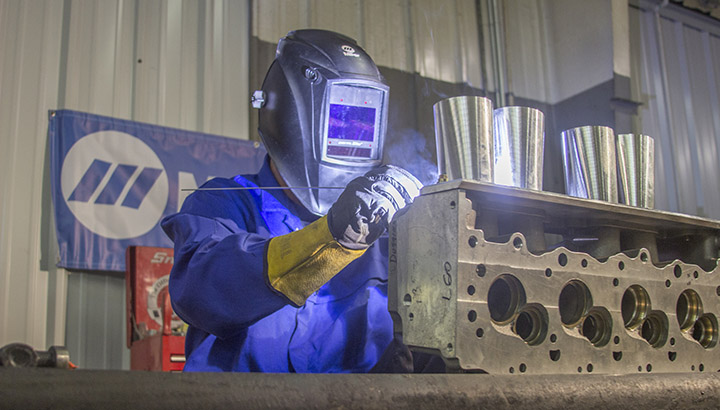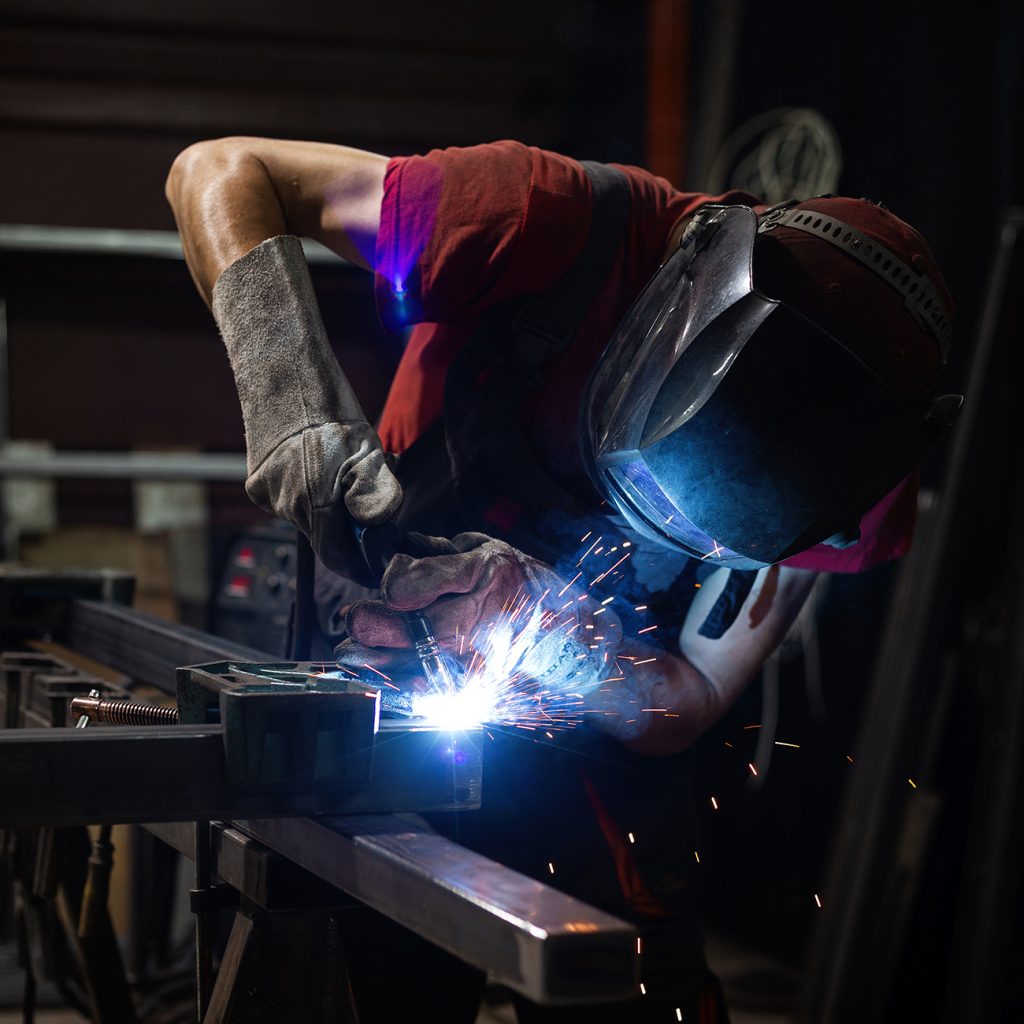All Regarding Welding: Key Insights Into Techniques and Ideal Practices for Success
Welding encompasses a variety of strategies, each matched for details materials and applications. Recognizing these techniques, such as GMAW, SMAW, and TIG, is crucial for attaining ideal results. Moreover, the right equipment and safety practices can not be overlooked. As preparation and fixing play vital duties in the welding procedure, understanding these elements can greatly improve the quality of the final product. What are the vital variables that ensure a successful weld?
Recognizing Various Welding Strategies
Welding techniques incorporate a selection of techniques, each suited to particular applications and products. Among one of the most typical strategies are Gas Metal Arc Welding (GMAW), Protected Steel Arc Welding (SMAW), and Tungsten Inert Gas Welding (TIG) GMAW, additionally referred to as MIG welding, is popular for its speed and versatility, making it suitable for slim products. SMAW, or stick welding, is favored for its simpleness and efficiency in outdoor atmospheres, particularly with thicker steels. TIG welding uses precision and control, making it appropriate for complex job and non-ferrous metals (Montana Mobile Welding and Repair Fabrication). Each technique has its special benefits and considerations, enabling welders to choose the very best approach based upon the job's demands, product type, and wanted outcomes. Understanding these strategies is necessary for successful welding
Essential Welding Tools and Devices
While various welding methods require details skills, the right equipment and tools are just as crucial for accomplishing top quality outcomes. Necessary welding tools includes welding devices, which vary relying on the method-- such as MIG, TIG, or stick welding. Protective gear, consisting of aprons, gloves, and headgears, warranties safety and comfort during the procedure. On top of that, components and clamps aid protect products in position, ensuring precision in welds. Consumables like welding poles, wire, and shielding gas are also crucial components that influence the quality of the weld. Moreover, devices such as cutters and grinders help with surface preparation and post-weld finishing, adding to a specialist result. Purchasing high-grade tools eventually improves the efficiency and performance of welding jobs.
Security Practices in Welding
Correct safety methods are crucial in the welding market to secure employees from prospective risks. Welders must put on suitable individual protective tools (PPE), consisting of helmets with proper shading, handwear covers, and flame-resistant clothes. Sufficient air flow is important to decrease direct exposure to damaging fumes and gases produced during the welding procedure. Furthermore, employees must be learnt the proper handling of welding devices to avoid crashes. Fire security procedures, such as maintaining flammable materials far from the welding location and having fire extinguishers easily available, are needed. Routine assessments of devices and workspaces can assist identify prospective hazards before they cause accidents. By sticking to these safety methods, welders can develop a safer working atmosphere and decrease threats related to their trade.
Readying Products for Welding
Preparing products for welding is a vital step that substantially affects the quality and honesty of the end product (Montana Mobile Welding and Repair Belgrade Welding). Appropriate preparation includes cleaning up the surfaces to get rid of impurities such as dirt, oil, and corrosion, which can jeopardize the weld. Methods such as grinding, fining sand, or using solvents are typically employed to achieve a clean surface. Additionally, ensuring that the materials mesh comfortably is crucial; voids can cause weak welds. It's additionally crucial to consider the positioning and positioning of the parts, as this will certainly impact the convenience of welding and the last end result. Finally, selecting the proper filler material and ensuring compatibility with the base metals is essential for achieving strong, sturdy welds
Tips for Getting High-Quality Welds
Achieving top quality welds calls for attention to detail and adherence to best methods throughout the welding process. Appropriate joint prep work is essential, guaranteeing surface areas are tidy and complimentary from contaminants. Choosing the proper filler product and welding method based upon the base metals is crucial for suitable bonding. Preserving consistent traveling speed and angle while welding can promote and protect against problems uniformity. In addition, regulating warmth input is crucial; excessive warm can bring about warping and compromised joints. If necessary, regularly checking the welds during the procedure permits for immediate adjustments. Employing appropriate post-weld treatments, such as cleaning and stress relief, can improve the durability and integrity of the weld, eventually making sure a successful outcome.
Fixing Common Welding Issues
Welding often provides difficulties that can impact the top quality and integrity of the last product. Usual concerns such as porosity, inconsistent weld grains, and getting too hot can develop, each needing details troubleshooting strategies. Comprehending these problems is important for welders to improve their skills and achieve perfect outcomes.
Porosity Troubles Described
Porosity can frequently be ignored, it continues to be a critical concern in welding that can jeopardize the honesty of a finished item. Porosity describes the presence of tiny gas pockets within the weld bead, which can lead and compromise the joint to premature failing. This issue generally emerges from contaminants, wetness, or improper protecting gas insurance coverage during the welding process. To reduce porosity, welders need to verify that the base materials are tidy and dry, utilize ideal protecting gases, and keep regular welding specifications. Consistently checking the devices and environment can additionally help determine prospective issues before they materialize in the weld. Dealing with porosity properly is important for accomplishing solid, resilient welds that fulfill quality criteria.

Inconsistent Weld Beans
Irregular weld grains can greatly influence the top quality and toughness of a completed item. Various variables add to this concern, including inappropriate travel rate, incorrect amperage setups, and inconsistent electrode click to find out more angles. When the welder moves as well quickly, a bead might appear narrow and lack penetration, while relocating as well gradually can cause extreme accumulation. Furthermore, using the incorrect amperage can result in either damaging or extreme spatter, both of which concession weld stability. The welder's technique, such as irregular lantern activity, can also lead to irregular bead look. To reduce these problems, welders ought to focus on preserving constant, controlled motions and making sure proper tools setups to accomplish uniformity in their welds. Uniformity is vital to attaining solid and trusted welds.
Getting Too Hot and Bending Issues
Too much warmth throughout the welding process can cause welding wire significant getting too hot and warping problems, affecting the architectural honesty of the workpiece. These problems often manifest as distortion, which can jeopardize placement and fit-up, making more assembly challenging. Aspects adding to overheating consist of the choice of welding criteria, such as voltage and travel rate, in addition to the kind of product being welded. To mitigate these concerns, welders need to preserve consistent travel speed and ideal warm input while keeping an eye on the work surface temperature. In addition, pre-heating or post-weld warmth treatment can assist alleviate stresses triggered by fast cooling - Belgrade Welding. Regular inspection and adherence to finest practices are essential in avoiding overheating and guaranteeing the longevity and integrity of bonded frameworks
Frequently Asked Inquiries
What Are the Profession Opportunities in the Welding Sector?
The welding industry provides diverse occupation opportunities, including placements as welders, designers, educators, and examiners. Experts can operate in production, construction, aerospace, and auto markets, benefiting from strong need and competitive incomes in various roles.
Exactly How Can I Improve My Welding Rate Without Compromising High Quality?
To improve welding rate without sacrificing top quality, one need to practice efficient techniques, preserve devices, enhance setups, and boost hand-eye coordination. Routine training and seeking responses can likewise greatly contribute to accomplishing faster, high-quality welds.
What Qualifications Are Available for Welders?
Numerous qualifications exist for welders, consisting of those from the American Welding Culture (AWS), the National Facility for Construction Education And Learning and Study (NCCER), welding skills and different industry-specific companies. These credentials boost employability and show ability proficiency.
Just How Does Welding Affect the Properties of Metals?
Welding affects the homes of metals by altering their microstructure, which can bring about adjustments in hardness, ductility, and strength. Warm input and air conditioning rates during the process significantly impact these material qualities.
Can I Bonded Dissimilar Metals Together?
